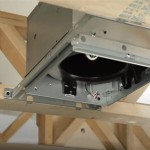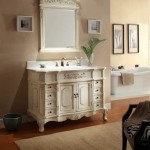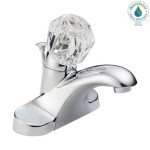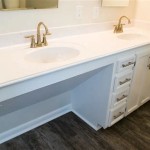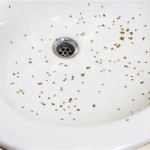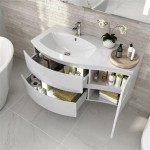How To Install a Bathroom Exhaust Fan Through a Wall Mount
Proper ventilation in a bathroom is crucial for maintaining air quality, preventing mold and mildew growth, and reducing excess humidity. A bathroom exhaust fan effectively removes stale air and moisture, contributing to a healthier and more comfortable living environment. While ceiling-mounted exhaust fans are common, wall-mounted installations offer an alternative solution, particularly when dealing with limited attic access or specific structural constraints. This article provides a comprehensive guide on how to install a bathroom exhaust fan through a wall mount, outlining the necessary steps and considerations for a successful project.
Before commencing the installation process, it is essential to ensure that all necessary safety precautions are taken. Turning off the power to the bathroom circuit at the main electrical panel is paramount to prevent electrical shock. Additionally, wearing safety glasses and gloves will protect against debris and potential hazards during the cutting and drilling stages. Familiarizing oneself with local building codes and regulations regarding bathroom ventilation is also recommended, as these codes often dictate specific requirements for fan capacity (measured in cubic feet per minute, or CFM) and exhaust ducting.
Key Point 1: Planning and Preparation
The initial phase of the installation process centers on thorough planning and preparation. This involves selecting an appropriate exhaust fan, gathering the necessary tools and materials, and identifying the optimal location for the wall mount.
Selecting the Right Exhaust Fan: The selection of an exhaust fan should be based on the size of the bathroom. A general rule of thumb is to choose a fan with a CFM rating that can exchange the air in the bathroom at least eight times per hour. To calculate the required CFM, multiply the bathroom's square footage by the ceiling height and then divide by 7.5. Consider also the noise level rating of the fan, measured in sones. Fans with a lower sone rating are quieter and less disruptive. For wall-mounted applications, ensure the chosen fan is specifically designed for wall installation or adaptable for such use.
Gathering Tools and Materials: The required tools and materials typically include:
- Bathroom exhaust fan (wall-mounted)
- Ventilation duct (diameter specified by the fan manufacturer)
- Exterior vent cap
- Drill with various drill bits (including a hole saw matching the duct diameter)
- Screwdriver (Phillips and flathead)
- Wire strippers/crimpers
- Electrical connectors (wire nuts)
- Level
- Pencil or marker
- Measuring tape
- Safety glasses and gloves
- Caulk or sealant
- Drywall saw or utility knife (for minimal drywall modification)
Identifying the Wall Mount Location: The location of the exhaust fan is critical for optimal performance and ease of installation. Ideally, the fan should be positioned as close as possible to the source of moisture, such as the shower or bathtub. Locate the wall stud nearest to the desired location. Use a stud finder to ensure accurate placement. Avoid placing the fan directly behind fixtures or obstructions that could impede airflow. Verify that the chosen location allows for a straightforward duct run to the exterior of the house, minimizing bends and turns, as these reduce airflow efficiency. Ensure there are no obstructions (pipes, wires, etc.) within the wall cavity where the vent will be placed.
Key Point 2: Venting and Ductwork Installation
Proper venting and ductwork are essential for effectively removing moisture and stale air from the bathroom. Inadequate ducting can significantly reduce the fan's performance and potentially lead to condensation issues within the wall cavity.
Creating the Wall Opening: Once the location is finalized, mark the outline of the fan housing on the wall. Use a level to ensure that the opening is square and plumb. Carefully cut the opening using a drywall saw or utility knife. If the wall is made of a different material (plaster, for example), use appropriate cutting tools for that material. Avoid cutting into any electrical wiring or plumbing pipes located within the wall. If a stud is encountered, consider shifting the location slightly or consulting a professional to determine if the stud can be safely modified to accommodate the ductwork. This is where careful planning in the previous step will come in handy.
Installing the Ductwork: The ductwork connects the exhaust fan to the exterior vent cap, providing a pathway for the moist air to escape. Use the correct diameter duct specified by the fan manufacturer. Flexible insulated ducting is commonly used, as it is easy to work with and helps to prevent condensation. Secure the duct to the fan housing using duct clamps or foil tape. Run the duct through the wall opening to the exterior wall. Minimize bends and turns in the duct run, as each bend reduces airflow. If bends are unavoidable, use gradual elbows rather than sharp angles. Ensure the duct is properly supported along its length to prevent sagging.
Installing the Exterior Vent Cap: The exterior vent cap protects the duct opening from the elements and prevents birds or other animals from entering. Choose a vent cap that is specifically designed for bathroom exhaust fans and that includes a backdraft damper to prevent outside air from entering the bathroom. Mark the location of the vent cap on the exterior wall and drill a hole using a hole saw that matches the diameter of the duct. Insert the duct through the hole and attach the vent cap to the exterior wall using screws. Seal around the vent cap with caulk to prevent water intrusion. The use of a ladder may be required and caution must be exercised when performing this exterior work. It is essential to ensure the vent cap exits to a location that will not cause issues for neighbors or the house itself. Avoid venting into an attic or crawlspace.
Key Point 3: Electrical Wiring and Fan Mounting
Connecting the exhaust fan to the electrical system requires careful attention to detail and adherence to safety regulations. Incorrect wiring can lead to electrical shock or fire hazards. Once the electrical work is done, the fan can be secured to the wall.
Wiring the Exhaust Fan: Before connecting any wires, double-check that the power to the circuit is turned off at the main electrical panel. Locate the electrical wiring within the wall cavity. Typically, this will consist of a 120-volt circuit with a black (hot) wire, a white (neutral) wire, and a green or bare copper (ground) wire. Connect the wires from the exhaust fan to the corresponding wires in the wall using wire connectors (wire nuts). Ensure that the connections are secure and that no bare wire is exposed. If the exhaust fan includes a light, there may be additional wiring connections required. Refer to the fan's wiring diagram for specific instructions. It is crucial to consult a qualified electrician if you are unsure about any aspect of the electrical wiring.
Mounting the Exhaust Fan: Once the wiring is complete, carefully slide the exhaust fan housing into the wall opening, being mindful of the duct connection. Secure the fan housing to the wall using screws, ensuring that it is level and flush with the wall surface. Some exhaust fans may require additional mounting hardware, such as brackets or straps. If necessary, run a bead of caulk around the perimeter of the fan housing to seal any gaps and prevent air leakage. Verify that the fan blades rotate freely and that there are no obstructions.
Testing and Final Adjustments: After mounting the exhaust fan, restore power to the circuit at the main electrical panel. Test the fan to ensure that it is operating correctly. Verify that the fan blades are spinning in the correct direction and that air is being exhausted through the vent cap. Check for any unusual noises or vibrations. If necessary, make any final adjustments to the fan housing or ductwork to optimize performance. Clean up any debris or materials from the work area. With the power on, switch the light and/or fan on to verify that the electric connections have been properly made. If issues are identified, turn the power back off and repeat the steps outlined above to address the issue.
This guidance provides a detailed method for installing a bathroom exhaust fan through a wall mount. By meticulously following each step and prioritizing safety, homeowners can improve their bathroom’s ventilation and mitigate moisture-related problems.

Venting A Bath Fan In Cold Climate Fine Homebuilding

How To Install An Exhaust Fan In A Wall

How To Install A Bathroom Fan Step By Guide Bob Vila

Nalle 8 Inch Exhaust Fan 80w 500cfm Through Wall Installation Ventilation 110v Smoke For Kitchen Bathroom Laundry Room Toilets Garage Ping Mall Black Yahoo

Your Complete Guide To Bathroom Exhaust Fans Universal

How To Install A Commercial Wall Exhaust Fan Pro Tool Reviews

Bathroom Exhaust Fans The Complete Guide By Fanco

How To Install A Bathroom Fan Step By Guide Bob Vila

How To Install A Bathroom Fan Step By Guide Bob Vila

Air Sealing Bathroom And Kitchen Exhaust Fans Building America Solution Center
Related Posts
